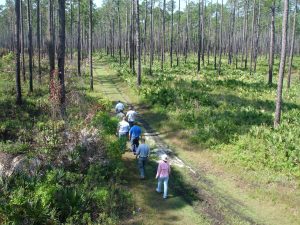
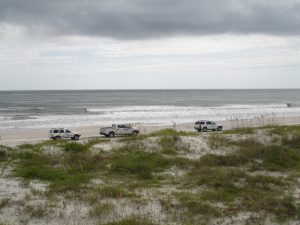
Stewardship of Florida’s Public Lands
Florida is blessed to have over 10 million acres of state-owned conservation public lands. Various state agencies, including the Florida Forest Service, Florida Fish & Wildlife Conservation Commission, Division of Recreation & Parks, the Soil & Water Conservation Districts and other state agencies, manage over 500 parks, forests, aquatic & other preserves, wildlife management areas, historic sites and recreation areas. Many of the lands were acquired through various acquisition programs, including the Florida Forever program that is still active, however, funding is subject to the will of the Florida legislature.
The Florida Department of Environmental Protection Division of State Lands (DEP) is the lead agency for stewardship of the lands. DEP’s role includes acquisition of conservation land as well as oversight for the management of lands. Once conservation land is acquired it is assigned to a state agency for management.
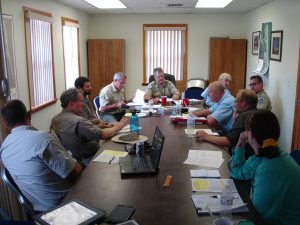
Land Management Plan
A Land Management Plan is required for all DEP conservation lands. A plan must be submitted by the managing agency within one year of acquisition and must be updated and submitted every ten years. Management plans are usually hundreds of pages of goals and plans for management of the property as well as maps, charts, tables and appendixes. Land Management Plans are available for the public to access and download through the DEP and managing agencies websites.
Florida Statute 259.036
Florida Statute 259.036 was enacted in 1997 to determine whether lands owned by the state are being managed properly. The Statute directs DEP to establish Land Management Review (LMR) teams to evaluate if the property is being managed for the purposes for which it was acquired and in accordance with the existing management plan. If the LMR team determines a property is not being managed properly, the managing agency must provide the reasons and plans for correction. A report of the LMR team findings is given to appropriate state departments. An Annual LMR Team Report is available to the public from the DEP website.
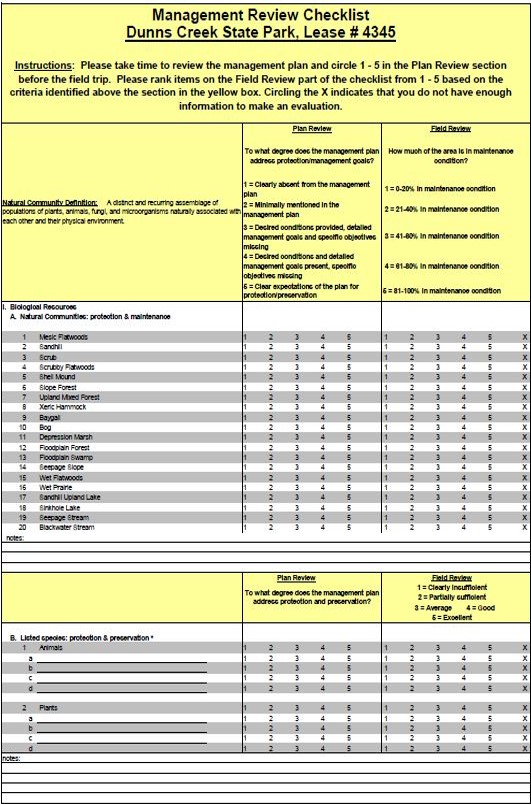
LMR teams review dozens of management activities including public access, prescribed fire, water quality, public education, protection of the biological resources, imperiled species and cultural & archeological features, and all the other purposes for which the land was acquired. The teams fulfil their role by visiting the site, meeting with management, touring the property and having a post-tour discussion where each team member completes a checklist scoring the various management activities. The post-tour discussion also gives team members an opportunity to make recommendation to the managing agency as well as commendations for their management activities.
LMR teams consists of representatives from the following: (1) DEP district office, (2) Division of Recreation & Parks, (3) Florida Forest Service, (4) Florida Fish & Wildlife Conservation Commission, (5) local Soil & Water Conservation District, (6) county or local government where the parcel is located, (7) a private land manager, and (8) a conservation organization. The team meetings are coordinated by a program director from the Tallahassee DEP office.
The Florida Native Plant Society (FNPS) has filled the role of the conservation organization team member since 2009 and has participated in nearly all of the reviews since then.
You can help preserve Florida special places by supporting funding for land acquisition and advocating for land conservation.
You can also help protect Florida’s public lands by following all park and other public land rules and regulations while visiting.
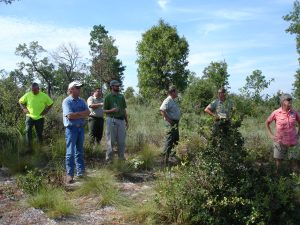
Links:
https://floridadep.gov/lands/environmental-services/content/land-stewardship
https://floridadep.gov/lands/environmental-services/content/acquisition-and-restoration-council-arc
https://floridadep.gov/floridaforever
This post was written by MGV Walter Bryant who is an active land management reviewer himself as a member of the Florida Native Plant Society.
Source: UF/IFAS Pest Alert
Note: All images and contents are the property of UF/IFAS.



